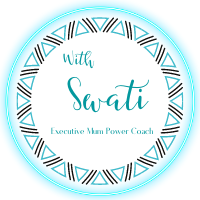
As an executive mum balancing a high-stress career and family life, you’re no stranger to neck and shoulder discomfort. Long hours at your desk, hunching over your phone, and the constant juggling of responsibilities can take a toll on your posture and muscles. If you’ve been experiencing nagging pain around your shoulder blade, you might be wondering, “Could this be related to my neck?” The answer is yes - a pinched nerve in your neck can indeed cause pain in the shoulder blade area. In this blog lets discuss how and why this happens and what you can do about it.
There are nerves exiting the spine all along the spine. The nerves from the neck (cervical spine) supply the shoulders, arms, and hands. When one of these nerves becomes compressed or “pinched,” it can cause pain, tingling, numbness, or even weakness along its pathway. This condition is known as cervical radiculopathy.
Pain from a pinched nerve in the neck often radiates to other areas, including the shoulder blade , because of how interconnected the nerves and muscles are. This is why you might feel discomfort not only in your neck but also in areas like the upper back, shoulder blade, and sometimes even down the arm.
Several factors can lead to a pinched nerve in the neck, including:
Poor posture: Hours of slouching at your desk or looking down at your phone can strain the cervical spine and compress the nerves.
Herniated Disc: A disc in the cervical spine may bulge or rupture, putting pressure on nearby nerves.
Degeneration: As we age, degenerative changes in the spine can lead to bone spurs that compress the nerves.
Muscle Tightness: Overuse or stress can tighten the neck muscles, increasing pressure on the nerves.
Watch this video on 3 Easy Tips to Prevent Mid Back Pain During Long Meetings: Advice for Executive Mums
Here are some easy steps you can take to manage this pain:
Correct Your Posture: Keep your spine aligned while sitting or standing. Use lumbar and cervical supports if necessary.
Stretch and Strengthen: Gentle neck stretches and strengthening exercises for the upper back can relieve tension.
Heat or Ice Packs: Apply heat to relax tight muscles or ice to reduce inflammation. If you want to know the hot and cold packs that I use, you can find them HERE.
Adjust Your Workspace: Set up an ergonomic workstation to minimise strain on your neck.
By addressing the underlying issues, you can reduce shoulder blade pain and restore comfort to your busy, active life. Remember, a healthy neck is key to maintaining your productivity and focus as an executive mum.
Here is a free guide on Quick Office Stretches for Nerve Pain Relief.
If you like this blog and want to be notified about new blogs as soon as they are published, subscribe to my mailing list below.
I would love to see you around the internet! For other places you can explore more about me: https://withswati.com/page/link
Note: This blog contains affiliate links which will bless me and I will be able to help more people with spine and joint pain.
















0 Comments